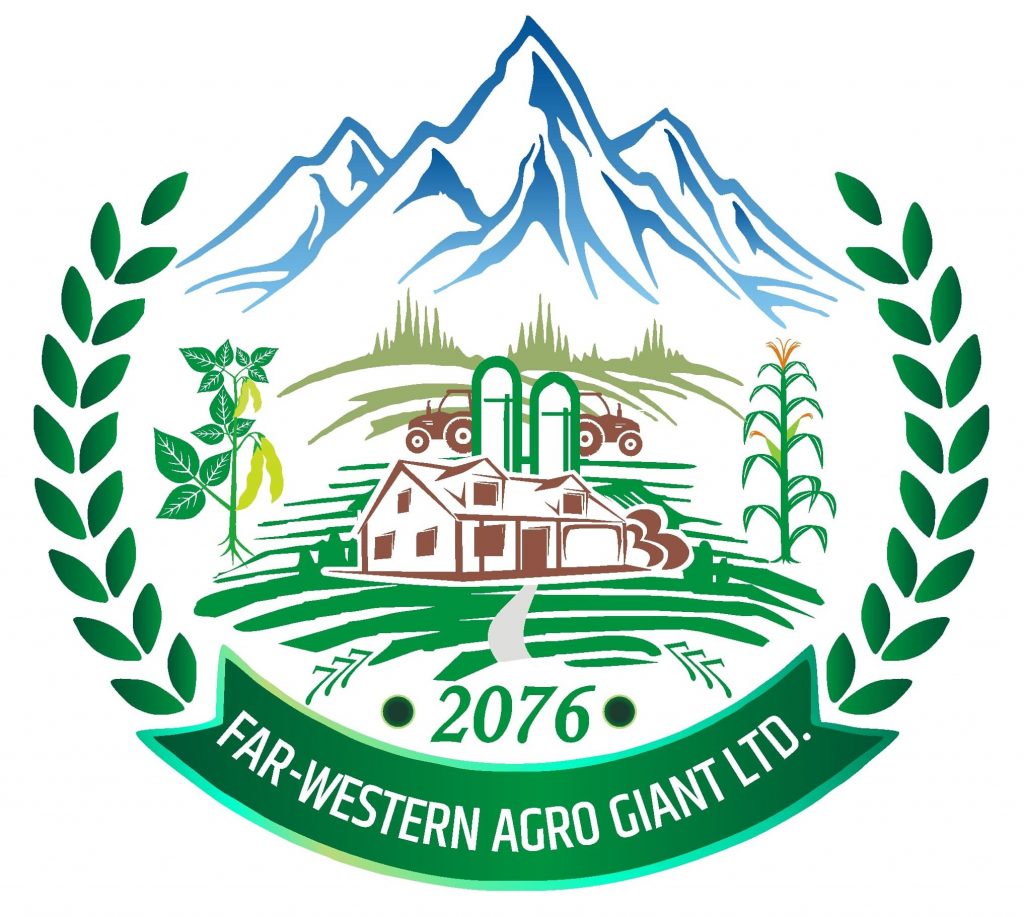OVERVIEW OF NEPALESE AGRICULTURE
As an agrarian country, more than 65% of the country’s population is directly or indirectly involved in agriculture. Agriculture contributes about 31.7% to the total GDP making it principle economic activity of the country. Paddy, Maize, Wheat, Millet, Buckwheat and Barley are the major cultivated cereals of the country whereas various vegetables, fruits, oilseed crops and cash crops are grown all over the country.In the fiscal year 2018/19. 1,06,85,550 metric tons of cereals were produced in the total cultivated area of 34,50,163 hectares which accounts to the national average yield of 3.1 tons/hectare. Similarly, animal husbandry has also a significant role in Nepalese agriculture. Out of total national area, only about 21% of the land is cultivated in Nepal, whose production is not enough to feed the country’s population of about 26.5 million growing at the rate of 1.35% annually.
According to Agricultural Census 2068, 60% of the farmers are unable to feed themselves year round with their production.
The agricultural production system of Nepal is unable to feed its population due to its subsistence nature. According to governmental statistics, about 74.9% farmers are involved in Subsistence farming whereas only 25.1% are involved in commercial farming.Furthermore land fragmentation is also the problem.More than fifty percent of the farmers are small land holders and cultivate in less than 0.5 hectares of land. This results in low productivity of crops and huge imports of commodities. In the last fiscal year only Nepal imported agricultural commodities worth of Rs.197 billion whereas exported merely worth 32 billion rupees.
Nepal Government has been spending huge amount of budget every year for the development of the agriculture sector. In the current fiscal year 2020/21, Government of Nepal has allocated budget of 41.40 billion rupees which was 34.80 billion in the fiscal year 2019/20. Despite this huge amount, the progress has been very slow and not so remarkable due to poor implementation of the policies, weak governance, influence of middlemen in the market and lack of connectivity between farmers and government agencies. Most farmers in the country face the problem of irrigation, unavailability of quality seeds and fertilizers, transportation in most rural parts of the country and lack of market and low price of the products.
Huge amount of subsidies on seeds, fertilizers and agricultural equipment are yearly declared but they hardly reach to the farmer level, which on one hand decrease the production and on the other hand discourage the farmers to be involved in agriculture. In the 1990 decade more than 90% population was directly involved in agriculture whereas now the portion has declined down to 65%, as many people have chosen services and other nonagricultural professions creating a huge lack of manpower in agriculture.
Nepal exports most of the agro products as raw materials in the international market. Lack of processing industries in the country has created a huge loss in the economy. Investment in processing industries can generate more employment, introduction of improved technologies, more consumption of the raw materials and produce skilled manpower. More importantly it can greatly contribute to the economy by value addition of the products. High value crops like Cardamom, Ginger, Coffee etc. fetch a good price in international market and Nepal had been world’s leading exporter of these products. Nepal is well known all over the world for the medicinal plants and herbs whereas less attraction of people and weak policies of government in these sectors have blocked the potential of the country.
Governmental projections estimate that in the upcoming 10 years more than 3 million population will be added which means 3 millions of more mouths to feed with the same cultivable land and decreasing manpower in agriculture. So, to tackle with this problem and overcome our trade deficit serious steps need to be taken urgently. Introduction of high yielding varieties of crops which are more resistant to diseases and pests, timely and abundant availability of fertilizers, mechanization in agriculture to overcome the problem of manpower, facilities of soft loan to the farmers, private public partnership to ensure good market price to the farmer products,strong policies regarding crop insurance can be the important steps. Government should encourage and pave the path for the private institutions and companies to come forward and invest in agriculture and should formulate the policies for the public companies as well.
Improvisation in the research and extension system is also the current need that should be taken into consideration. Farmers in Nepal are practicing farming in the old traditional manners and lack knowledge about modern technologies, improved seeds, plant protection etc. Most farmers feel difficulty in pesticide application and uncontrolled application causes many more problems including soil degradation. Extension workers should be mobilized efficiently in the rural parts as well so that the connectivity of agencies with the farmers can be ensured.As a whole, the agriculture sector of Nepal demands honest and efficient hard work and coordination of all the stakeholders, the farmers, the consumers, business sectors and the governmental agencies in order to achieve the national goal of self sufficiency.
By Prasant Pant
Pant is BScAG final semester student

